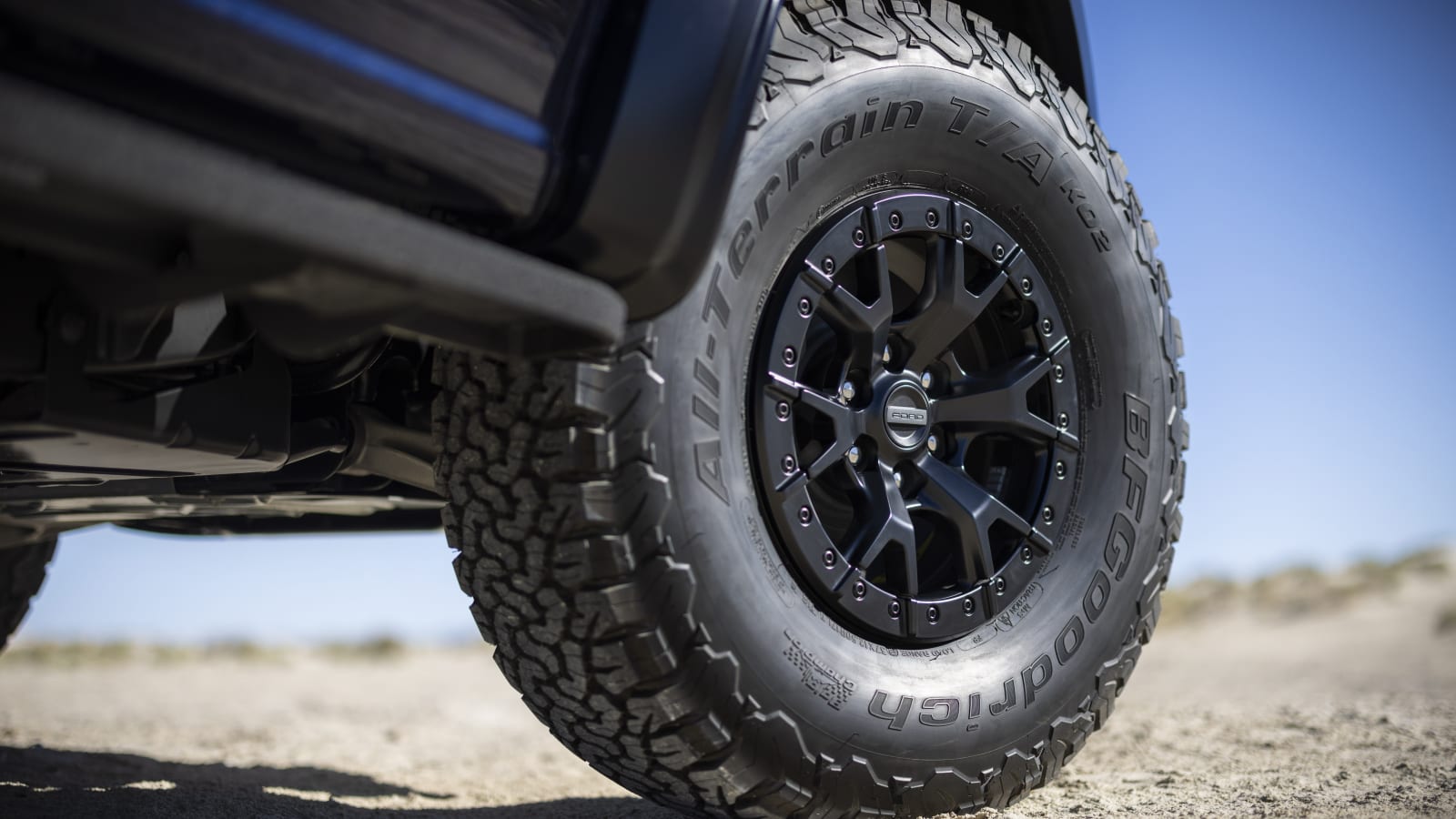Why Ford put a V8 back into the F-150 Raptor now

The Ford F-150 (SVT) Raptor was born with V8 engines. It first hit the market with a 5.4-liter V8 before quickly adding a 6.2-liter option to the fold. The guttural snarl of a V8 engine quickly became synonymous with the Raptor’s off-road ability, until it wasn’t. Ford revealed the second-gen Raptor for the 2017 model year exclusively with a 3.5-liter twin-turbo V6 engine. There was no replacing the noise of a V8, but the performance provided by this powertrain was difficult to argue with.
Fast forward to the third-gen Raptor, and yet again, Ford introduced it with an EcoBoost V6. However, we were told a Raptor R was coming with a V8 to supplement the standard V6-powered truck. Ladies and gentlemen, it’s here, and the V8 providing thrust is the supercharged V8 from the Mustang Shelby GT500. The price? $109,145. This prompted us to ask the question: Why bring the V8 back now? The obvious answer to many consumers might be the Ram 1500 TRX’s existence, but Ford’s answer is a bit more complex. Tony Greco, program manager for the Raptor R, took us through Ford’s decision making, and it starts with the final generation of F-150 SVT Lightning from the 1990s.
“There was a time when we pivoted to making the first-gen Raptor as SVT, and there were a lot of pissed off people that we stopped making the Lightning,” Greco says. “That Lightning had a V8 in it. A lot of people were just really disappointed … so we’ve been hearing for over 10 years in subtle ways and in then bluntly telling us, ‘Hey, a-holes, start putting the engine that I want in this thing.’”
With the EcoBoost V6 occupying the space that a naturally aspirated V8 would when it comes to performance, though, Ford had to aim higher if it was going to stick an eight-cylinder engine back into its off-road pickup. When you add power, there are plenty of other complications, and Greco made it clear that he doesn’t believe the previous generation Raptor (before Ford swapped to a coil-spring rear suspension) was up to the task.
“We’re very conscious of the fact that there’s people out there that want a V8 back in the truck,” Greco tells us. “That’s a known thing. But a couple things. We didn’t feel like we could put this engine in a truck that didn’t have the rear suspension that came in Gen 3. We didn’t want to put the engine in a leaf spring suspension, and then you get out there, and it’s not overly impressive. You still have some deficiency in the chassis.”
So, Ford waited to put the V8 back into the Raptor because it needed the proper underpinnings to make it worthwhile. Greco also told us that with the big engine, he always wanted to make sure it had the big 37-inch tires. That would’ve posed an issue with the old leaf spring design, because Greco tells us that it wasn’t possible to package the 37s with leaf springs.

Of course, there’s the TRX angle to this Raptor R, too. Greco didn’t bring it up as a reason for the Raptor R being revealed now, but we asked.
“TRX started to become a thing when we were developing the Gen 3,” Greco says. “We’ve been hearing TRX for a long time. We did not deviate any of our plans. We knew we had to put the right chassis in the truck before we brought in the extra power. And it didn’t matter who else was coming.”
So there you have the official line from Ford. The Raptor R is not an official answer to the TRX, even if it sure does feel like one.
“Listening to the customer and just responding to the desire and to the climate of the market, there seems to be enough people that really want and desire to have the biggest, baddest, most capable Raptor,” Greco finishes. “So, this truck is for them.”
Related video:



